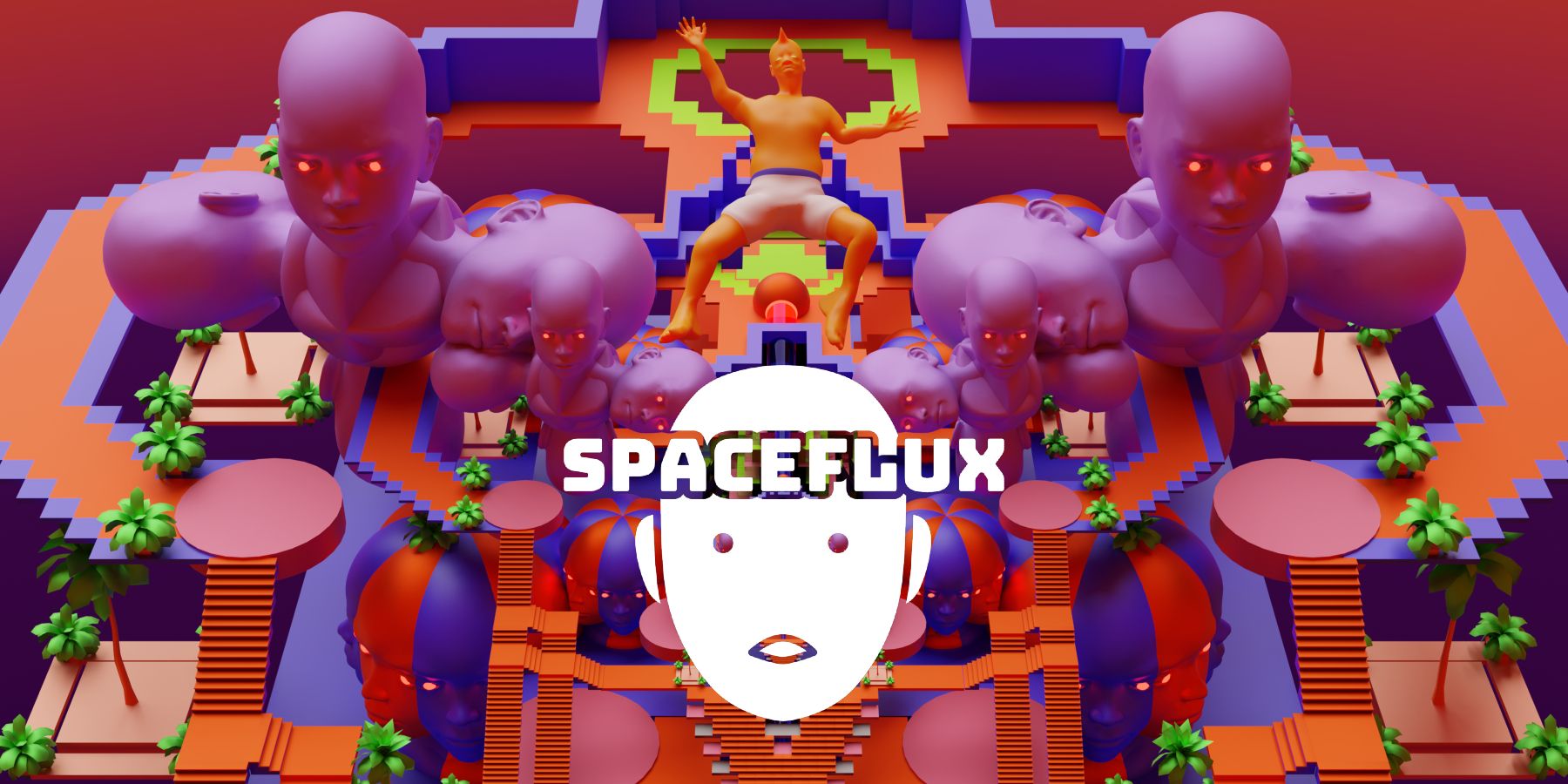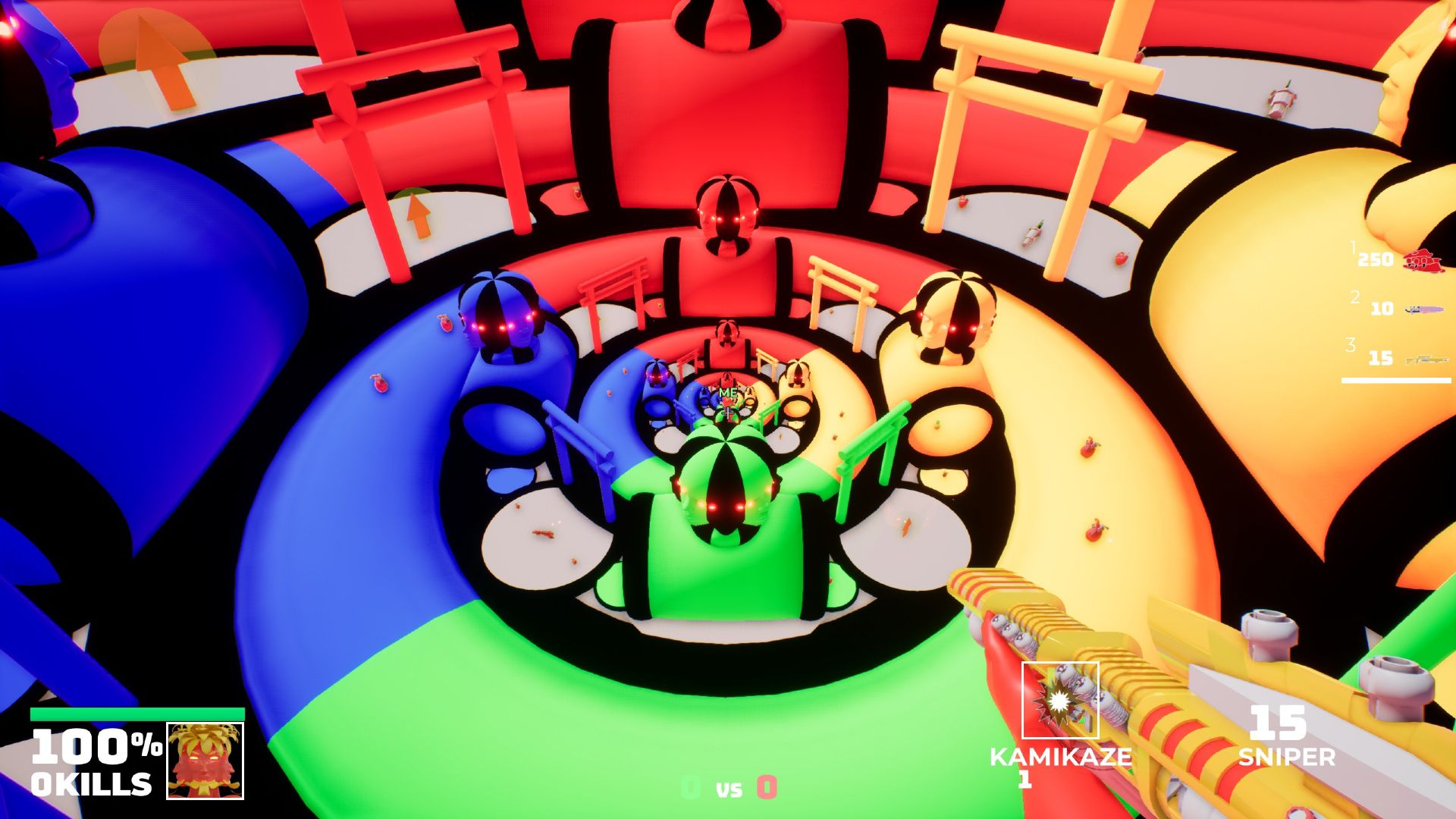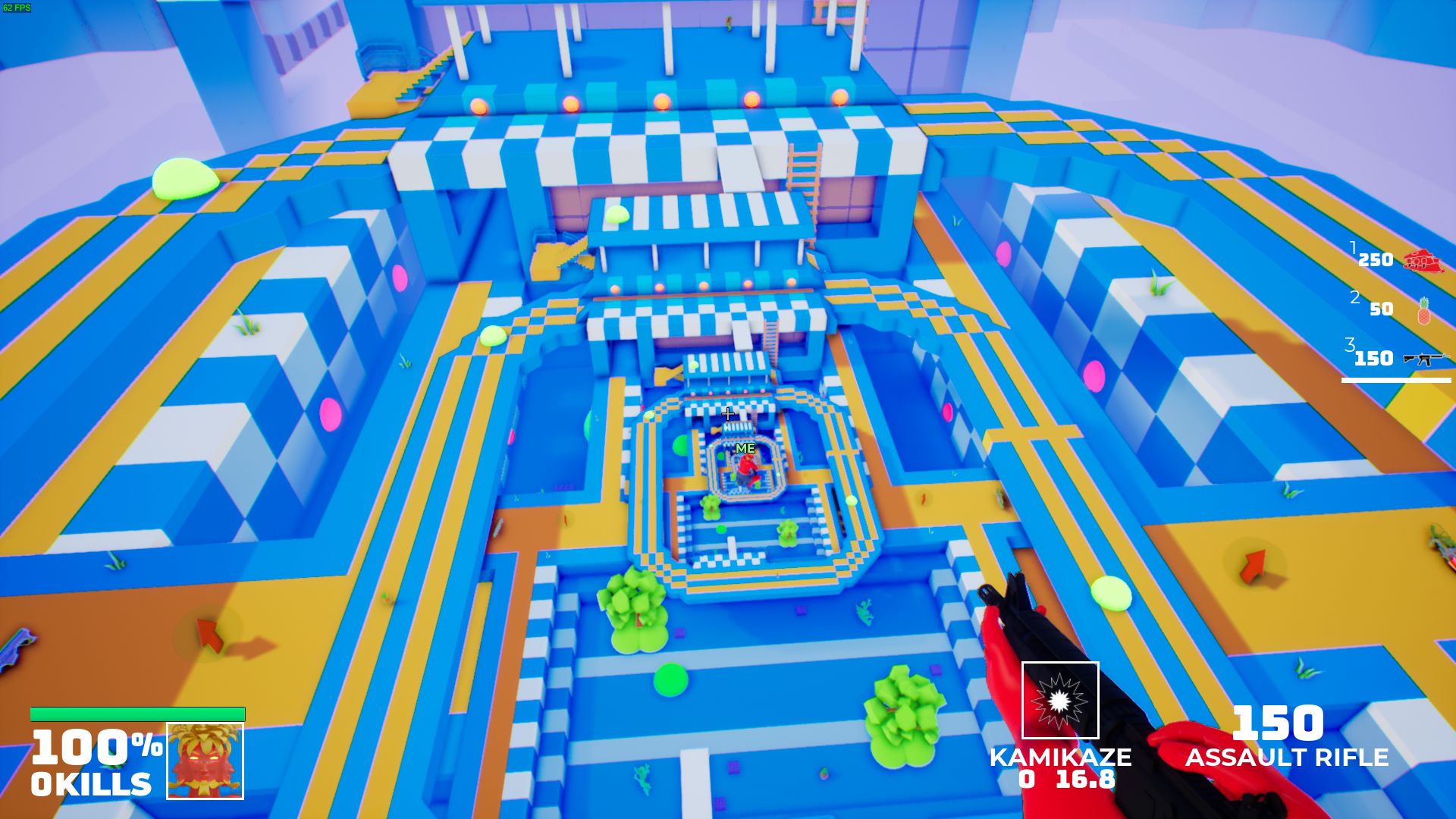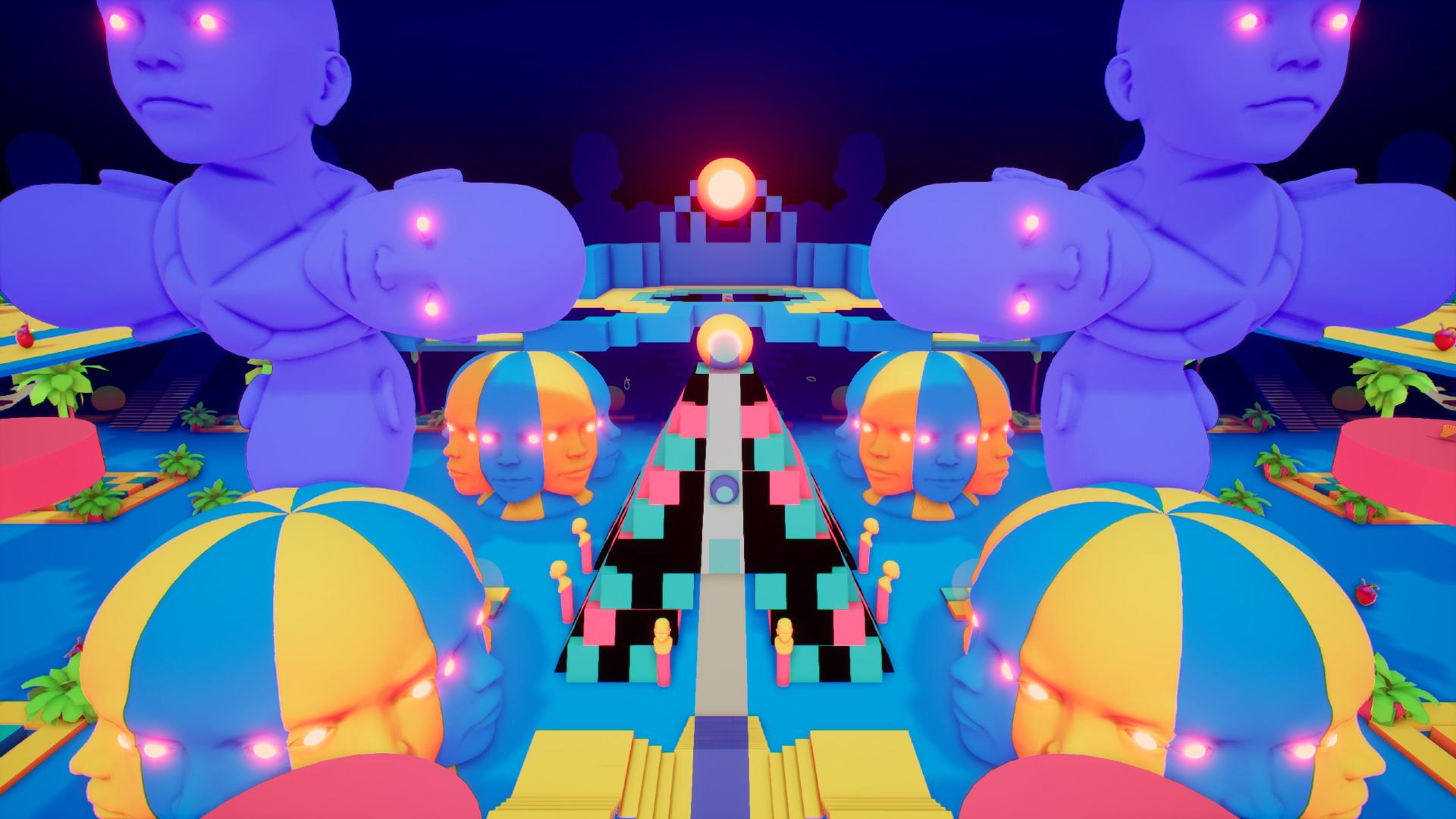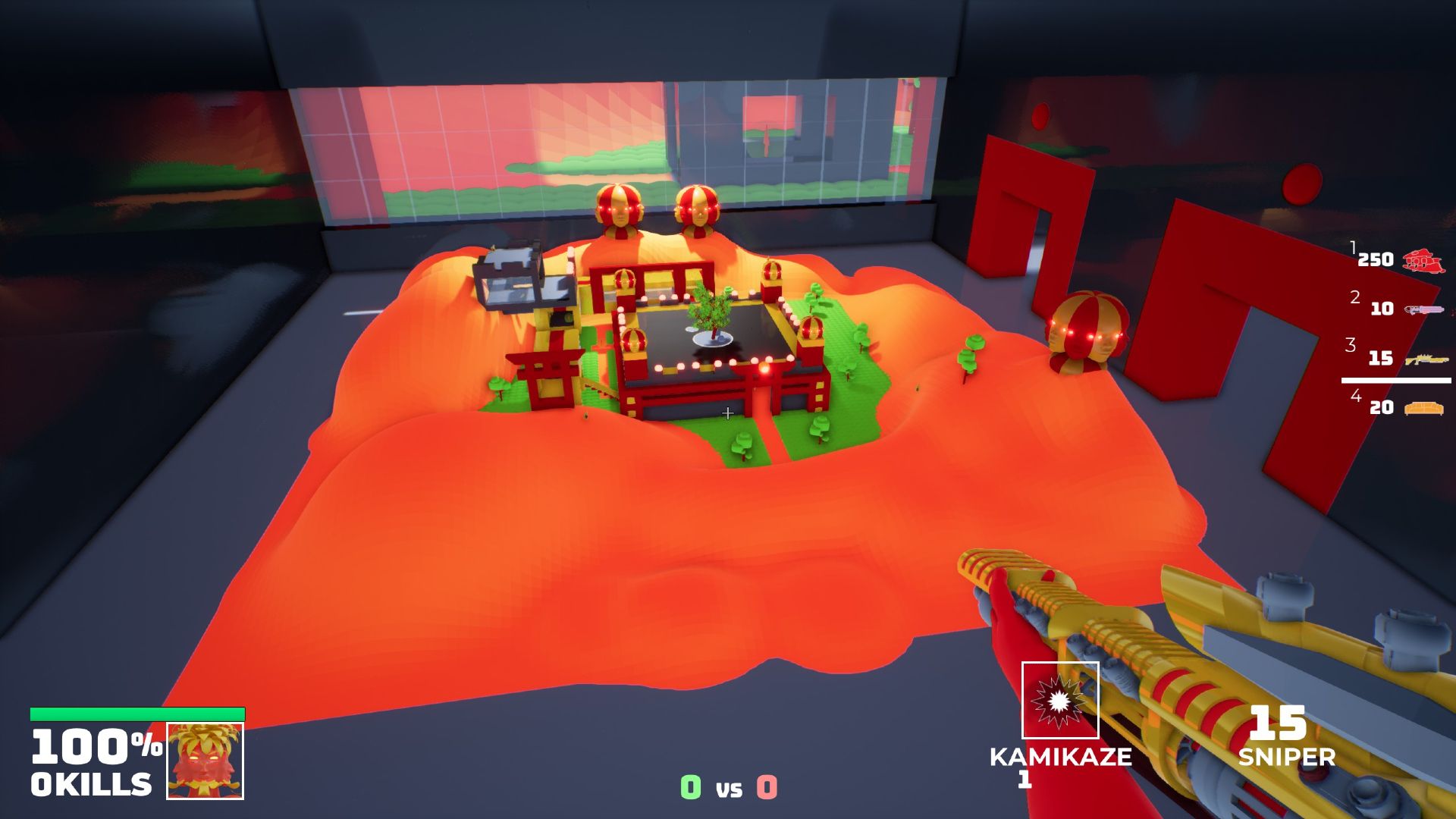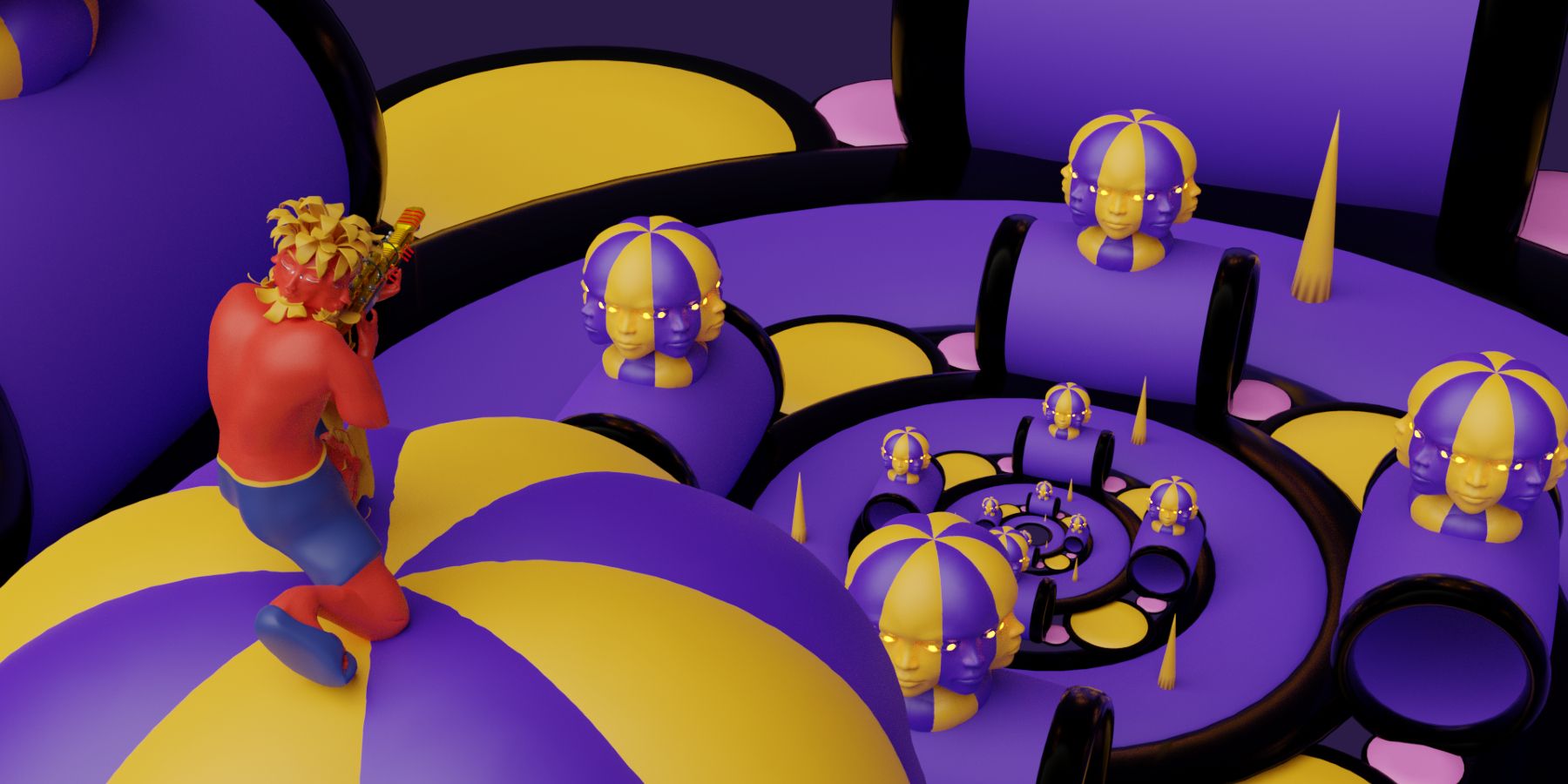Many video games are more than a sum of their influences. Shooters are among the most common game genres, and there are plenty of indie devs working on them — particularly retro shooters akin to games like Doom. Spaceflux is one such title in Early Access now, inspired by classic arena shooters and bigger titles like Halo, but it stands out for more unique influences such as Portal or Minecraft.
Game Rant spoke to Spaceflux developer Calin Ardelean about the game's trippy design centered around impossible geometries and first-person shooter mechanics. Interview has been edited for clarity and brevity.
Q: Tell us a little bit about yourself.
A: My name is Calin Ardelean, I've been working on Spaceflux since January 2018 and I was really happy to have its Early Access launch last year. It was a big milestone. Spaceflux is a game that I created with my partner/artist Raymondd Parisien, it's just the two of us. We hope to keep sending out updates and build on the game.
Q: How did you two start working together?
A: I was interested in Unreal, I started working on it in 2017. I made a couple of ideas, and then decided to go with this one about making an FPS with portals — sounds familiar I'm sure. It started evolving into something different, becoming an FPS with impossible geometry that I was exploring. Somewhere along the way my good friend came along and said, "It looks like you could use some art and sound design." I thought it was great, the two of us being a programmer and artist. Worked out nicely.
Q: I understand you were working with Unreal on a virtual reality therapy program. Can you tell me about that?
A: That was for a very brief time with a start-up called MentallyVR. We were making therapy in VR where you could have real-time sessions with actual therapists in a virtual setting. I worked on a prototype for a meditative VR app where you'd be in a 360 video somewhere like a mountain or beach with guided meditation.
Q: Did any of that work building virtual worlds influence Spaceflux?
A: Actually, I already had the game's core concept at that time, so I started working on Spaceflux even earlier. Its been quite a while now, almost four years. You sometimes can't believe its been that long since 2018 already.
Q: Well, did the professional experience with Unreal help your development once you really pivoted into it?
A: Yeah, sure. But my main focus is game development, so I started messing with games in Unreal earlier than that, and I've participated in a couple of game jams too. I've been working with game engines for a long time, and once I tried Unreal I got hooked, I thought it was the greatest thing ever.
Q: What kind of projects did you make at those game jams? Have you always leaned toward shooters?
A: I've always been into shooters, but at the game jams... I have one game on itch.io called Big Boy Simulator that I did with a team for the Mix and Game Jam in 2020. That was a point-and-click kind of simulator game where you have a giant creature coming after smaller people. You would click to spawn apples that draw the people in, and that would guide the creature to the finish line.
It's quite different from Spaceflux, or shooters in general.
Q: Well going back then, what kind of games influenced you, led you where you are today?
A: A big influence was Halo. I played a lot of Halo: Reach, and Spaceflux is an unusual arena shooter that's a lot like Halo — whether or not you'd consider that an arena shooter. There are definitely a lot of similar things I wanted to build the game around, like abilities.
Spaceflux has a kind of simple structure, which I really like. It's very arcade-y and replayable.
Q: This is a good year to be a fan of Halo, and 2021 has also seen a Call of Duty and Battlefield. Has working on an FPS changed your view of other games in the genre?
A: I can't speak too much about how its influenced me looking at something like Battlefield 2042, that and Spaceflux are too far apart to really compare. But I have seen an increase in enthusiasm for retro shooters over the past few years. Spaceflux is kind of a weird take on a retro shooter from simpler days, like Quake or Doom.
In the past year or so especially I've seen a lot of games follow the trend of being like Quake. It's interesting, I'm not really sure why. But when it comes to FPS games, Spaceflux doesn't fit into categories very easily thanks to things like its impossible geometries.
Q: On Spaceflux's Kickstarter you described it as a mix between Quake and Minecraft thanks to destructible environments. How did those elements come together?
A: The game actually started with destructible environments in mind, so all the maps are fully destructible. You can also place blocks, and the cool thing about having those destructible blocks with the ability to place them is it helps build emergent, dynamic gameplay.
Sometimes we'll have tournaments and I'll see people do things I've never seen before, because with these building blocks to play with it's a lot like a sandbox.
Q: What kind of emergent interactions have you seen that you never considered?
A: Well speaking of blocks, there was one ridiculous game using an ability called Cube Cameo where you can transform into a cube. It's like camouflage in that the map is also made of cubes, so you blend in. What this person did — during a tournament — was place a bunch of blocks everywhere and then become one, blending in using the same color.
The other player was looking through this mess of cubes that became the landscape and had no idea where they were. It's just a funny strategy if you're stalling for time, or something like that.
Q: Going into impossible geometries, where did you develop an interest in fractals or these other heady ideas many probably wouldn't immediately jump to?
A: These ideas came along one-by-one, it's not like I had it all planned from the start. I do have an interest in puzzle games, especially puzzle-shooters like Portal. That's one of my favorite games, and I was so captivated by its mechanics I had never seen before that I wanted to do something similar.
I thought it would be more engaging if instead of a puzzle game I made an online multiplayer shooter, since it's one of the biggest genres out there. I wanted to combine puzzle elements with unique mechanics and put them into a shooter, essentially.
Q: Last I saw there are six kinds of impossible geometries. How did those different ideas come about, and are you planning to add more?
A: Oh yeah, I do have a bunch of ideas noted somewhere.
As far as putting what's there together, I was starting to notice is all the impossible geometries are based on symmetries. You have a fractal map that contains a smaller version of itself, and another version, and so on. Then there are looping modes where you have horizontal or vertical copies of the map tiled in an infinite expanse. There's also a mirror mode.
I guess the fractal modes have to do with scales, the looping modes have tessellation, and the mirror mode is a reflection of itself. I started to think about all the different ways you can have these symmetries, and surprisingly you get infinite worlds out of it — or they seem infinite, but they're just infinitely repeating.
Q: What is it like programming something like this, especially adding in destructible environments?
A: It was a nightmare, actually.
Q: That's what I figured.
A: The two things coming together, repeating levels and destructibility, was kind of the ultimate nightmare for me. Especially networking that into an online game.
In hindsight, having the destructible factor in there was a big obstacle in making the impossible geometries work. But after a lot of frustration, somehow it worked. I just hope I don't have to do it again.
Q: Well, how is it programming new elements into this framework? Weapons or skills such as Cube Cameo?
A: It is a little tedious to add new elements and make sure they work in all the different geometries. That's a big enough challenge where I think I'd like exploring different elements, but getting them to work in all those spaces would take a lot of time. I'm hoping to streamline the process so I can just add a new element and have the code take care of that. It's a challenge I'm still facing.
Q: Do you have any long-term plans to start streamlining? Are you looking to get more help?
A: Right now we're not really looking for more programmers. It's definitely something I'll have to consider, but for now it's still in Early Access and seems manageable for me to work on by myself. I am trying to go back into my code and clean it up, make everything look a lot neater so I can support future updates.
Q: How would you say the nature of these impossible geometries affects the FPS gameplay? What issues or intended elements arise — for example, can players shoot themselves?
A: Some strange things do happen. You were previously able to shoot yourself, but I disabled that because it was too frustrating. The first thing anyone does is see themselves, think they're an enemy, and kill them.
There are other situations, for example in horizontal loop, where you can get shot at from any direction because the horizontal plane tessellates out in all directions. You can shoot any instance of the player you see on any map, which means you're bound to find someone if you just look around. Sometimes a situation will come about where both players are shooting at each other from behind — which also happens in fractal mode. In that case the play might be to turn around when the opponent doesn't expect it.
Then in all these modes, because you have so many instances of each player in sight, you're trying to find a line-of-sight where you most easily see the target. Depending on the angle you might be able to see one but not others, so you have to make decisions. The biggest fractal player may be blocked and disappear from view, but the medium-sized player might still be visible.
It's pretty chaotic, but also dynamic.
Q: How did Spaceflux's art style come about? It's got a weird vaporwave thing going on alongside the geometries.
A: The sharp angles and polygons mostly come from maps being voxel-based. Because they're made out of cubes, the other geometry is low-poly to match their aesthetic. I think it was the way to go because it also supports everything being destructible.
As far as the vaporwave stuff goes, there's a big head theme. Heads with faces on each side appear everywhere, and the characters do too. The main character, King Bro, is this dude with four faces on his head and another on his crotch. It's just trying to be surreal and trippy.
Q: You were working for a couple of years before hitting Kickstarter. What were you looking to get out of it, and at what point did you decide Spaceflux was ready for crowdfunding?
A: I wanted to do it full time. This is the first and only Kickstarter I've ever done, and some lessons were learned. But it was a great experience, and it was very successful — surprisingly so. I was thrilled to see people supporting the game.
Q: What kind of lessons did you learn?
A: I think to have a better Kickstarter campaign, having better marketing would have been huge. Back then our social media presence wasn't nearly as big. If the Kickstarter had happened today, it probably would have been a lot more successful. But at that point it was leading up to the Early Access launch, so I thought it was a good opportunity to build hype.
There just wasn't really enough marketing to have a huge campaign, it was a smaller, contained thing.
Q: So you held that Kickstarter and launched soon after. What has been the reaction from the audience you've grown?
A: The Kickstarter was definitely successful beyond what my standards were, and the Early Access launch wasn't quite as good. However, I've noticed over the last year the game has been gaining traction little by little. So it wasn't a huge Early Access launch, but it's much bigger a year in.
Q: How have those people helped influence development from there?
A: They have influenced it. We have a Discord where people give feedback and their own ideas for improvements or other mechanics they'd like to see. They also report bugs, that sort of thing. I think it was really helpful to have that community.
We also do play sessions and tournaments. We try to host a tournament every month, we're going to have one called Slapflux on November 27, actually. It's a joint tournament with Slap City. Having that community has been amazing, we even have regulars — it's a lot of fun.
Q: Spaceflux feels like it's tailor-made for social media in a way. Something people see and wonder what's happening there; it's how I discovered it on Twitter. Have you been pushing for those kinds of reactions?
A: I did offer a million dollars to whoever can get to the center of the fractal.
But really, it helps a lot. The selling point on places like Twitter and Reddit is you just show it off. The thing I like to show the most is that fractal effect, and it really gets peoples' attentions. I think it's really well-suited to social media.
Q: How long do you think Spaceflux will be in Early Access? How much more are you envisioning before it's conceivably a full game?
A: I don't have any definite timeline, but I see it going really far into the future. I see Spaceflux as the type of game that keeps getting updates, sort of like Minecraft being updated for over a decade. That's the strategy I see there, getting a continuous flow of content.
By the way, we are still working on updates even if it has been a while since the last one. We want to release one really soon and then keep going.
Q: Are there any ideas you have for other projects on the side? Or is this all you want to work on right now?
A: I think this is it, I don't really have many ideas for other games. I just want to keep developing Spaceflux.
[END]
Spaceflux is available now in Early Access on Steam.
Source: Slapflux Tournament

